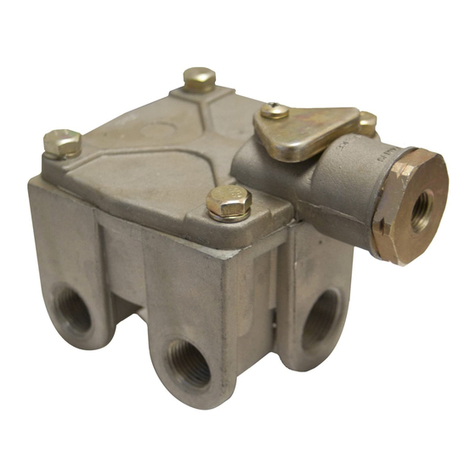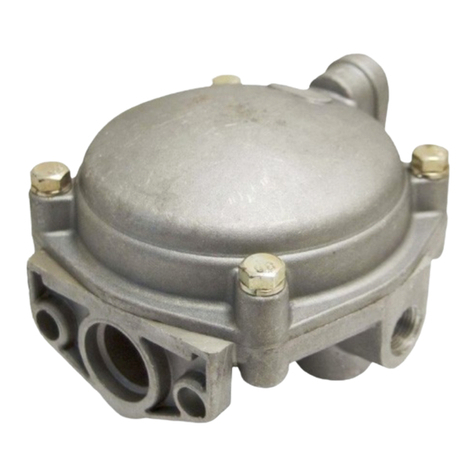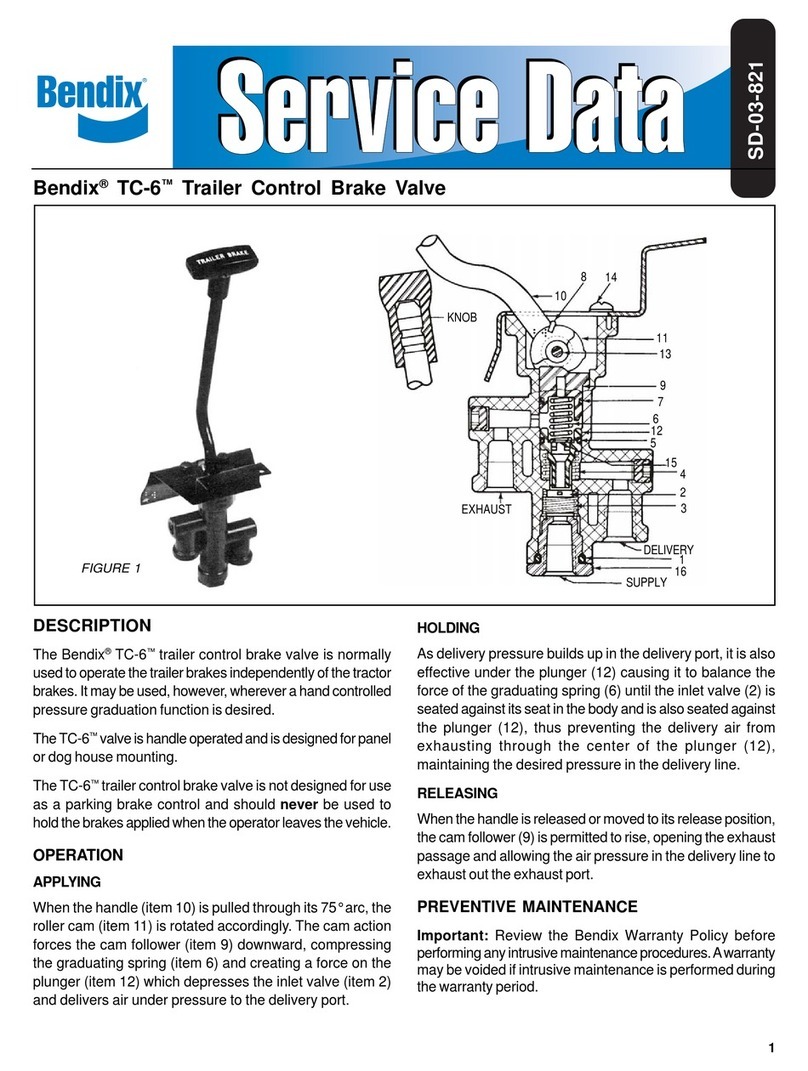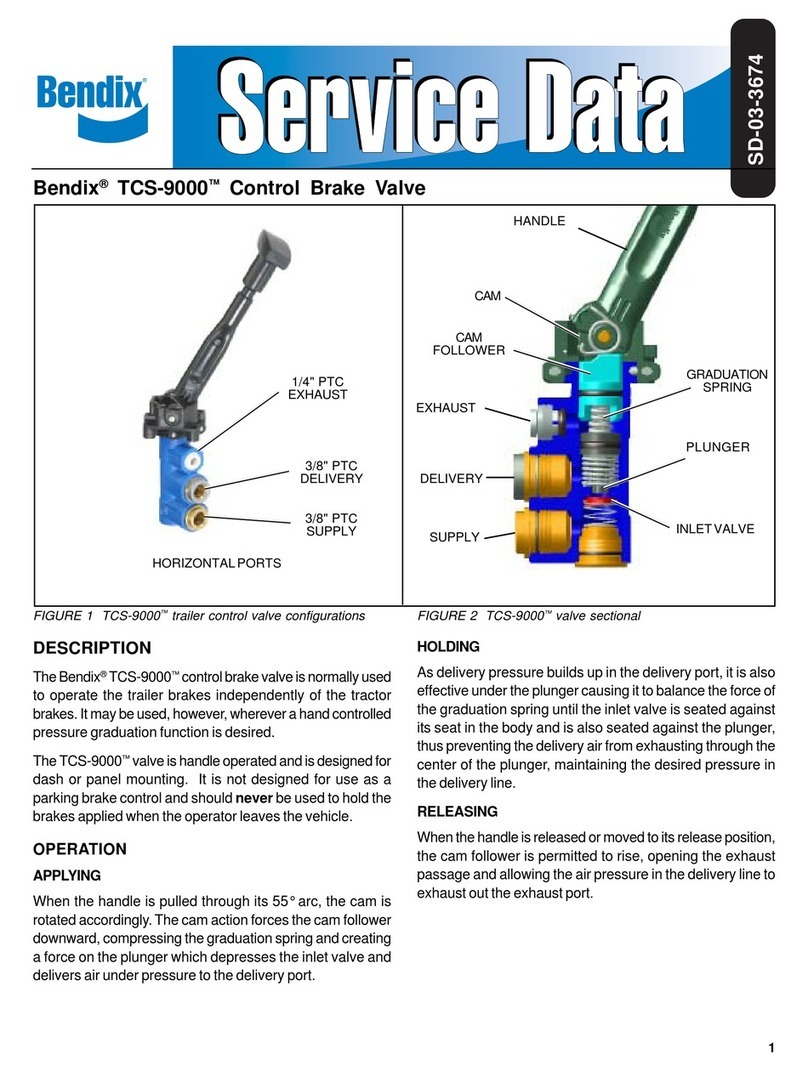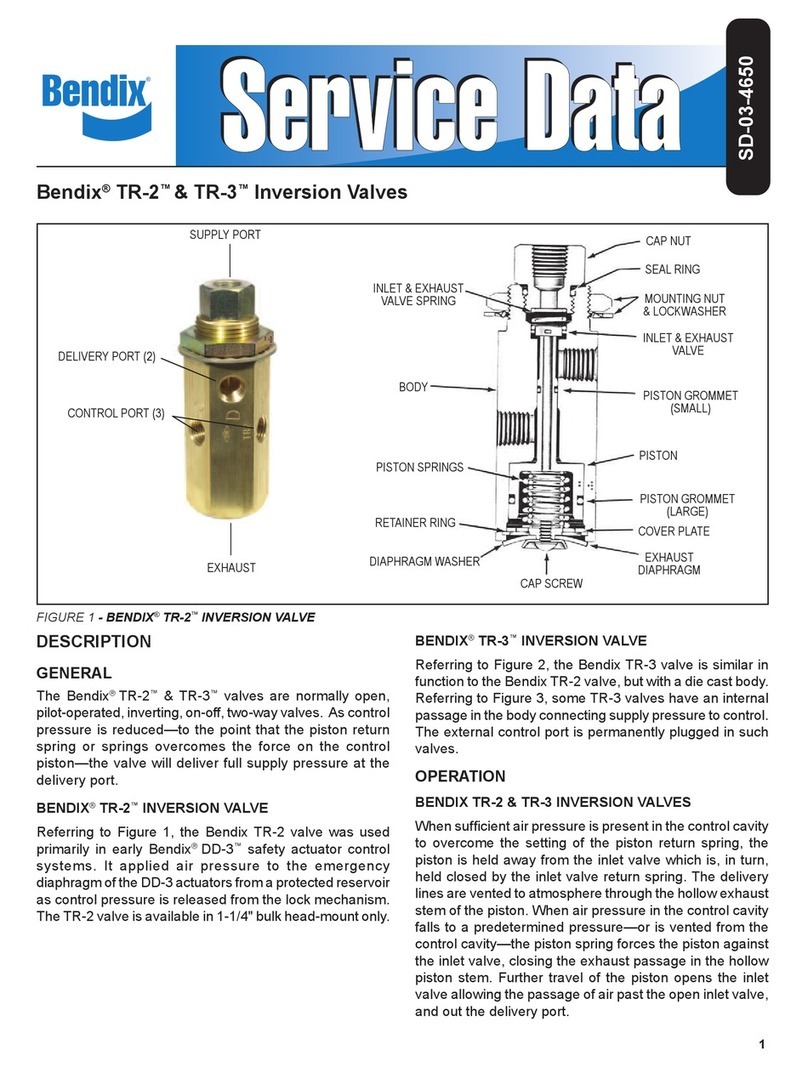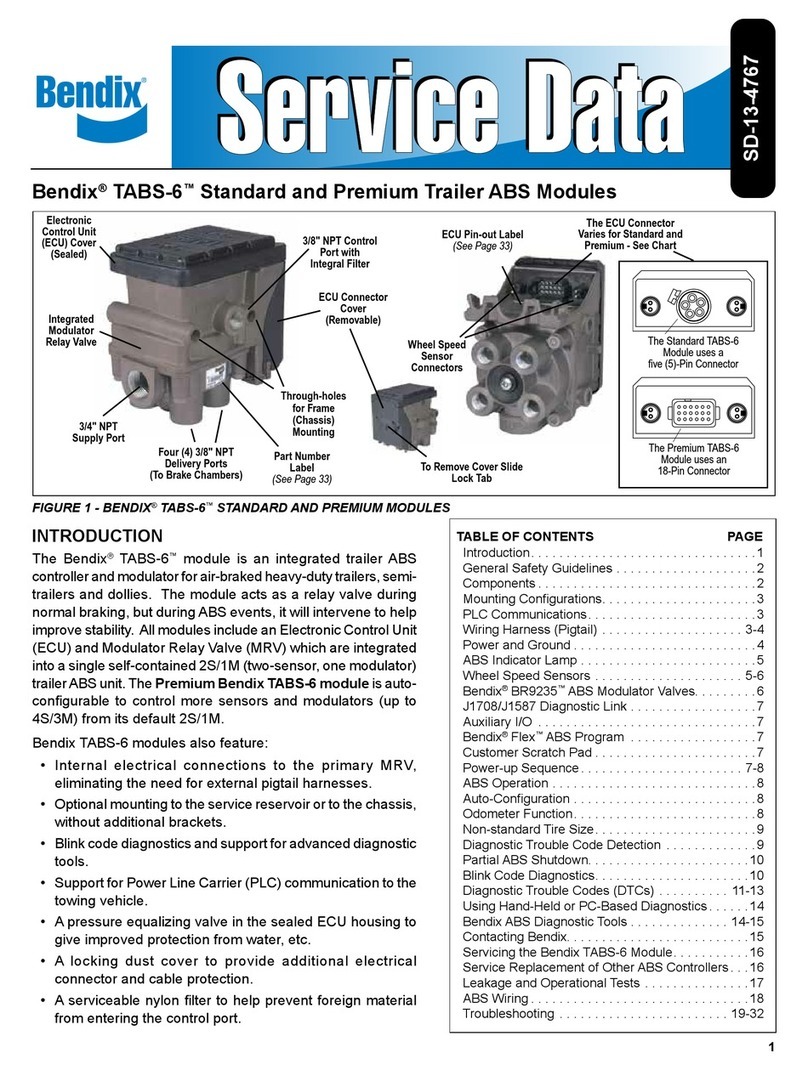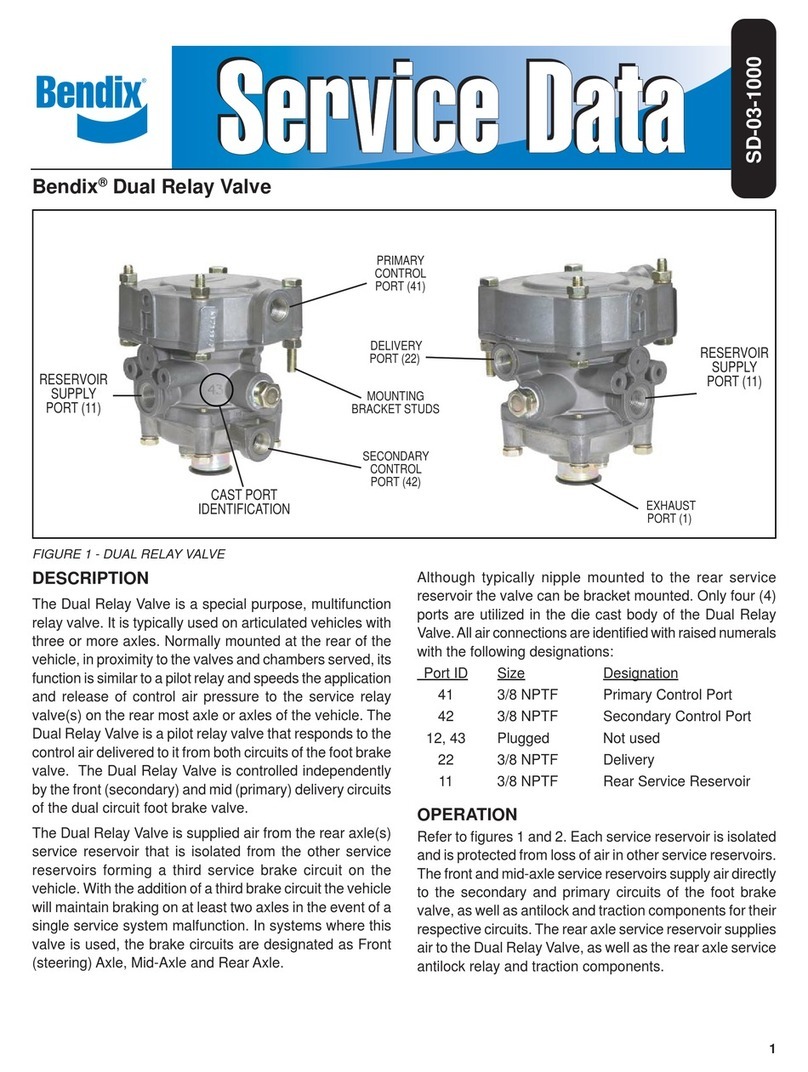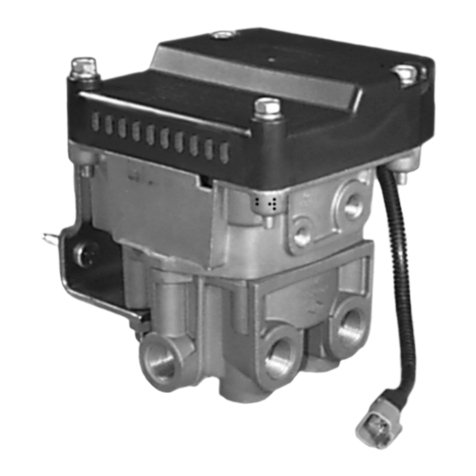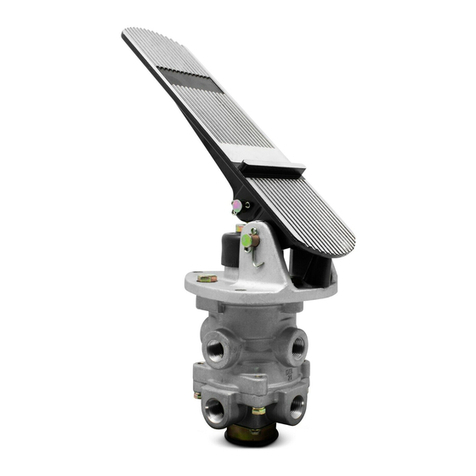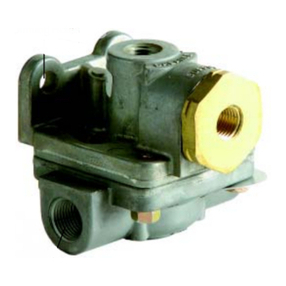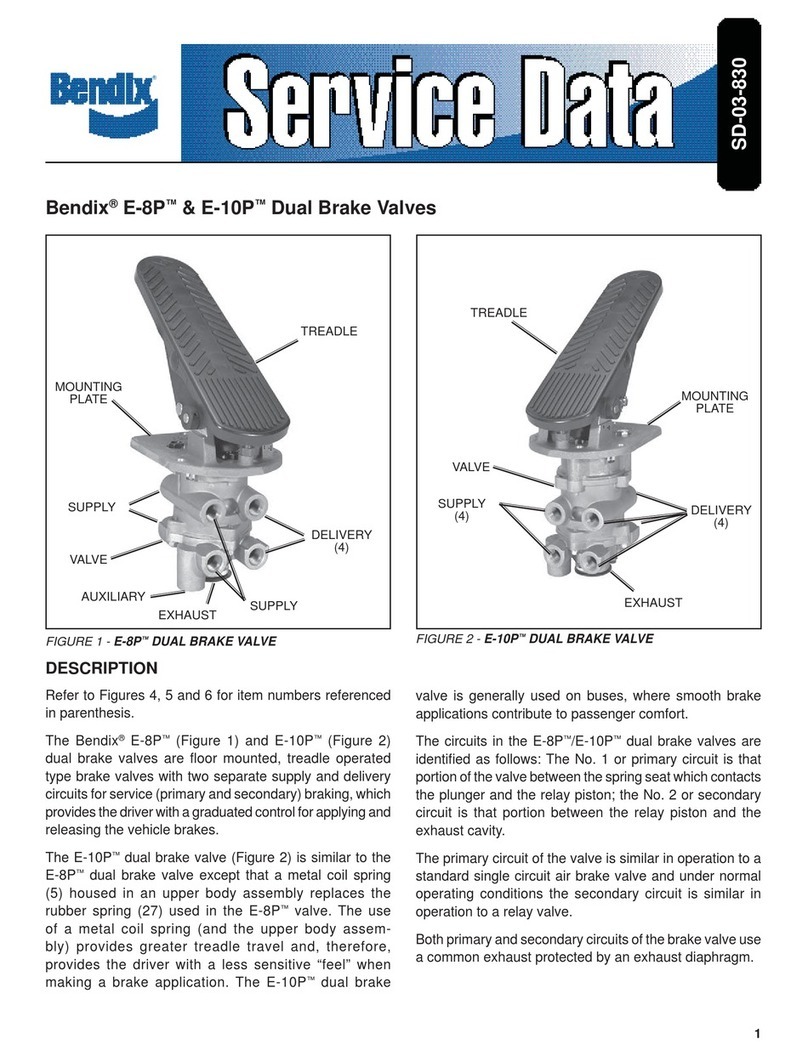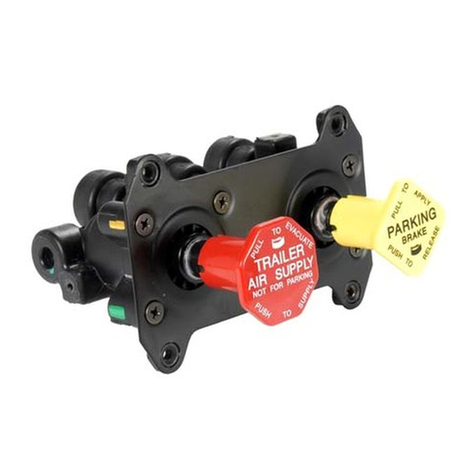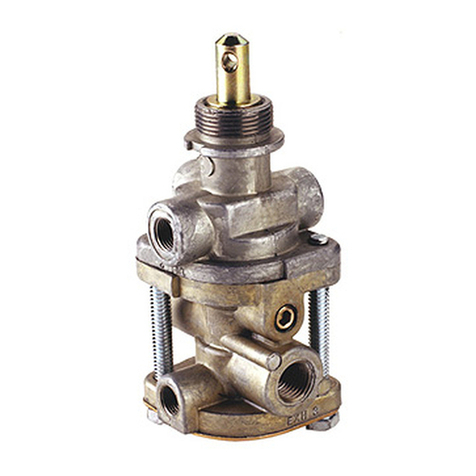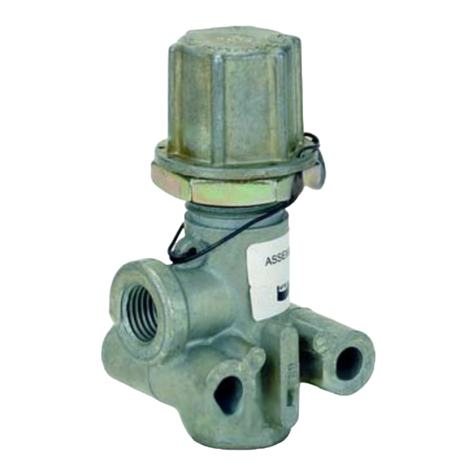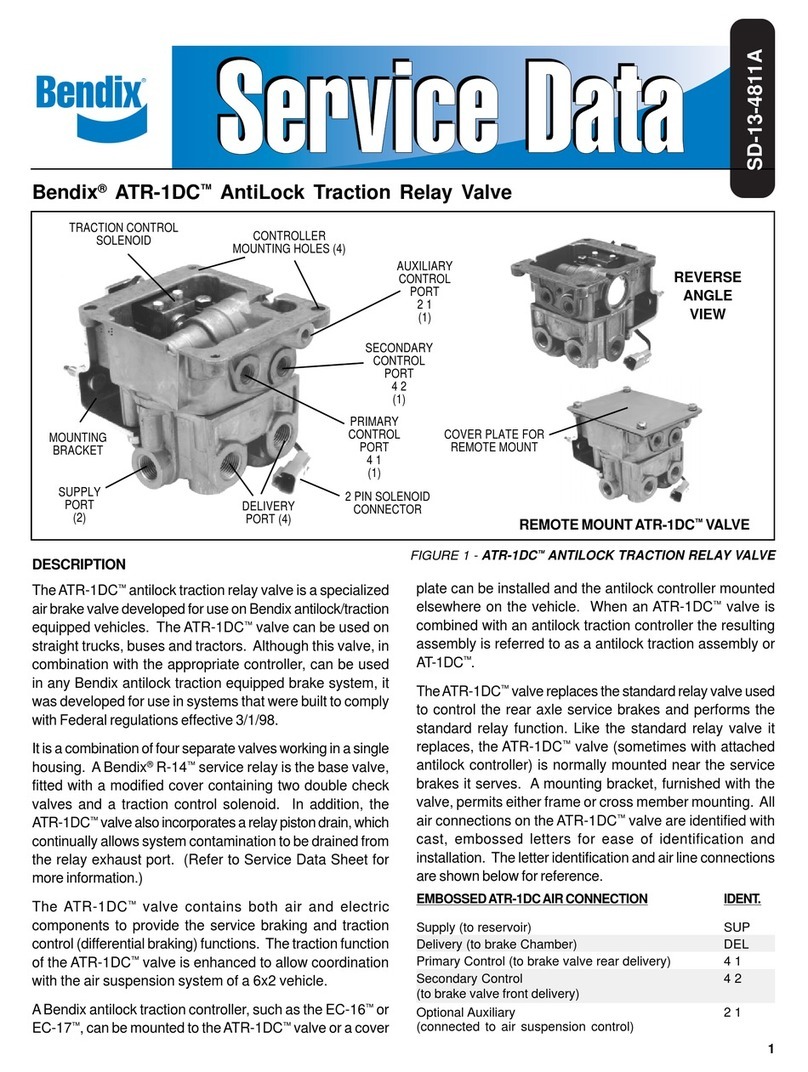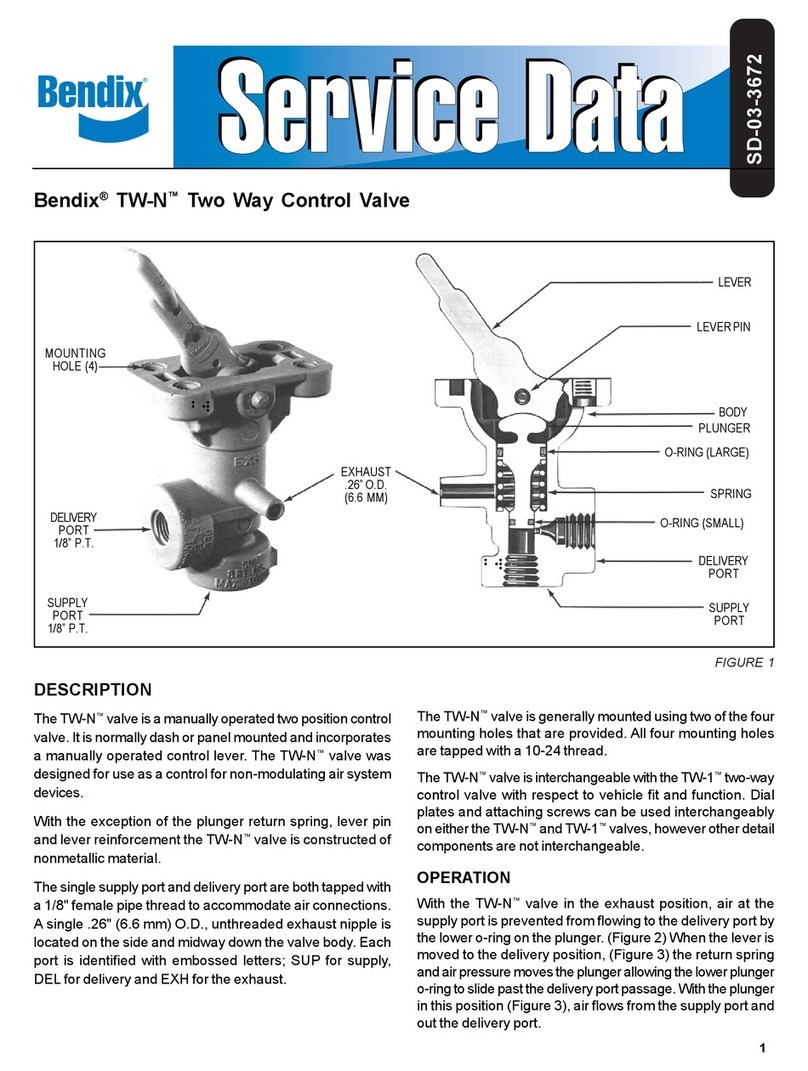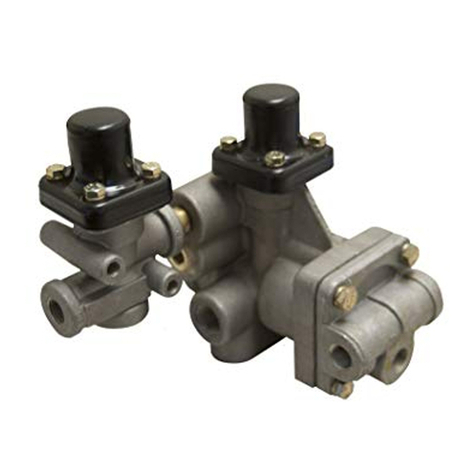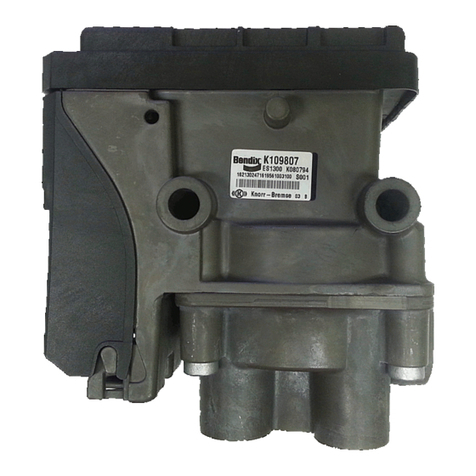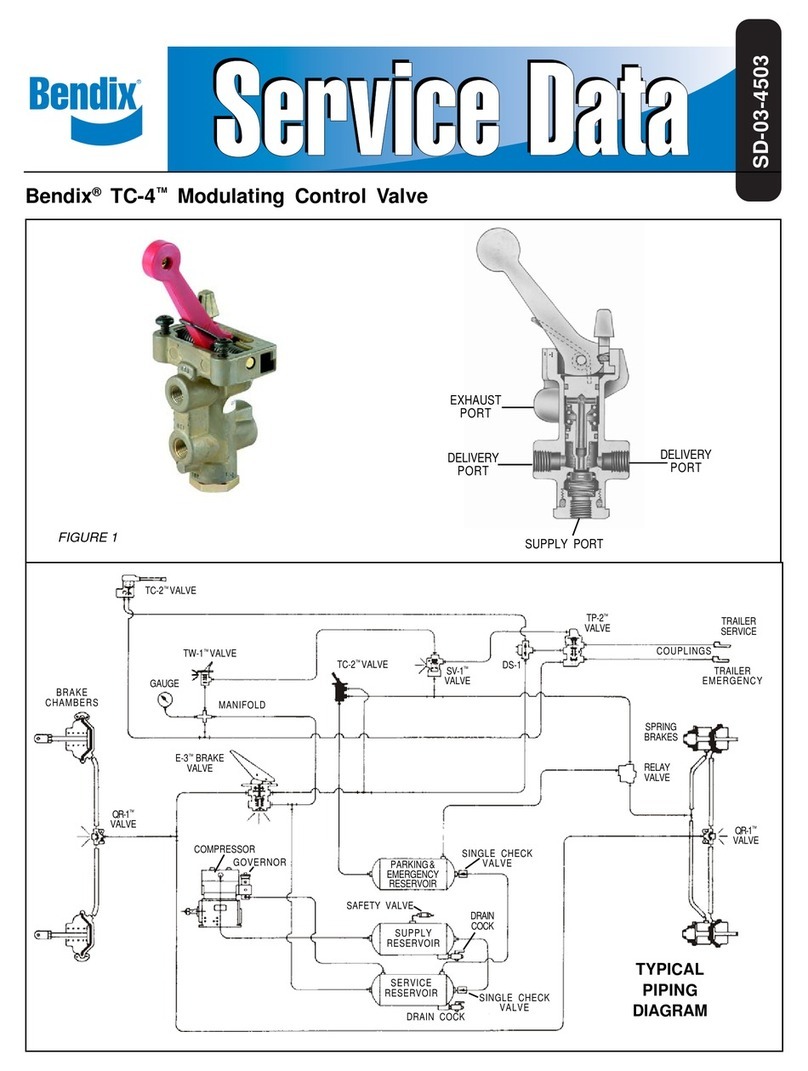
InsertDisassembly
NOTE: It is recommended that entire inlet/exhaust insert
be replaced as an assembly.
7. Removeo-ring(17) from check valveseat(16).
8. Removescrew(20), washer (19), and diaphragm(18).
9. Depressandholdinsert,andremovepreloadspring(21).
10. Remove inlet/exhaustvalve (14),valve spring(13), and
o-ring(15).
11. Removevalveretainer(12).
Cleaning and Inspection
Wash all metal parts in mineral spirits and dry. Wipe all
rubberpartsclean.
Inspectallparts for excessive wear or deterioration.
Inspectvalveandvalveseatsfornicksandburrs.
Check springs for cracks, distortion or corrosion.
Inspect exhaust check diaphragm for flexibility, wear, and
deterioration.
Replace all parts not considered serviceable during these
inspections.
ASSEMBLY
1. Lightlylubricatethepiston, valve bores,ando-ringswith
DowCorning55-Mpneumaticgrease(Ourpiecenumber
291126).
2. Positionrubber spring (10) in piston(7).
3. Install spring seat (9), washer (8), and cap screw (6).
Torque cap screw to 50 inch pounds.
4. Installpistono-ring (3) and place pistonreturnspring(2)
in body.
5. Install piston retainer (4). Be certain the prongs snap
overgrooveinvalvebody.
InsertAssembly
6. Positionpreloadspring (21) in exhaust checkvalveseat
(16).
7. Installdiaphragm(18), diaphragm washer (19)(withlips
pointing out), and install screw (20). Tighten screw
securely.
8. Installo-ring(15)andvalveretainer(12)oninlet/exhaust
valvebody(14).
9. Installvalvespring (13)onexhaust checkvalveseat(16)
andinstallinlet/exhaustvalve(14)intoexhaustvalveseat
(16).Press thevalvedown untilthepreload springsnaps
andholds the assembly together.
10. Install o-ring(17)onexhaust checkvalve seat(16).
11. Place inlet/exhaust insert in valve body; position
identification washer. Press the insert down while
installing retaining ring (1). Make certain retaining ring
snaps into body groove, thus locking in the insert in
place.
Testing A Rebuilt E-2™or E-3™Brake Valve
Performoperatingandleakagetests as outlined in “Service
Tests” section.
WARNING! PLEASE READ AND FOLLOW
THESE INSTRUCTIONS TO AVOID
PERSONAL INJURYOR DEATH:
When working on or around a vehicle, the following
general precautions should be observed at all times.
1. Park the vehicle on a level surface, apply the
parking brakes, and always block the wheels.
Always wear safety glasses.
2. Stop the engine and remove ignition key when
working under or around the vehicle. When
working in the engine compartment, the engine
should be shut off and the ignition key should be
removed. Where circumstances require that the
enginebe in operation, EXTREMECAUTIONshould
be used to prevent personal injury resulting from
contact with moving, rotating, leaking, heated or
electrically charged components.
3. Do not attempt to install, remove, disassemble or
assemble a component until you have read and
thoroughly understand the recommended
procedures. Useonlythe proper tools and observe
all precautions pertaining to use of those tools.
4. If the work is being performed on the vehicle’s air
brake system, or any auxiliary pressurized air
systems,make certaintodrain theair pressure from
all reservoirs before beginning ANY work on the
vehicle. If the vehicle is equipped with an AD-IS™
air dryer system or a dryer reservoir module, be
sure to drain the purge reservoir.
5. Following the vehicle manufacturer’s
recommendedprocedures, deactivate the electrical
system in a manner that safely removes all
electrical power from the vehicle.
6. Never exceed manufacturer’s recommended
pressures.
7. Never connect or disconnect a hose or line
containing pressure; it may whip. Never remove a
component or plug unless you are certain all
system pressure has been depleted.
8. Use only genuine Bendix®replacement parts,
components and kits. Replacement hardware,
tubing, hose, fittings, etc. must be of equivalent
size, type and strength as original equipment and
be designed specifically for such applications and
systems.
9. Components with stripped threads or damaged
parts should be replaced rather than repaired. Do
not attempt repairs requiring machining or welding
unless specifically stated and approved by the
vehicle and component manufacturer.
10. Prior to returning the vehicle to service, make cer-
tain all components and systems are restored to
their proper operating condition.
3
